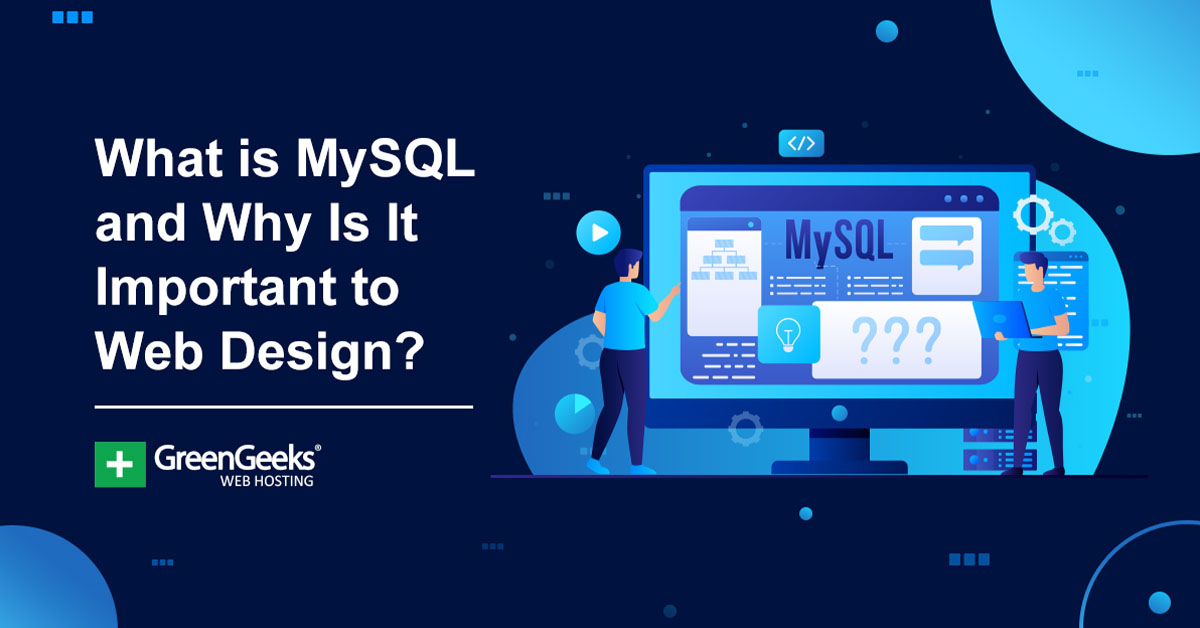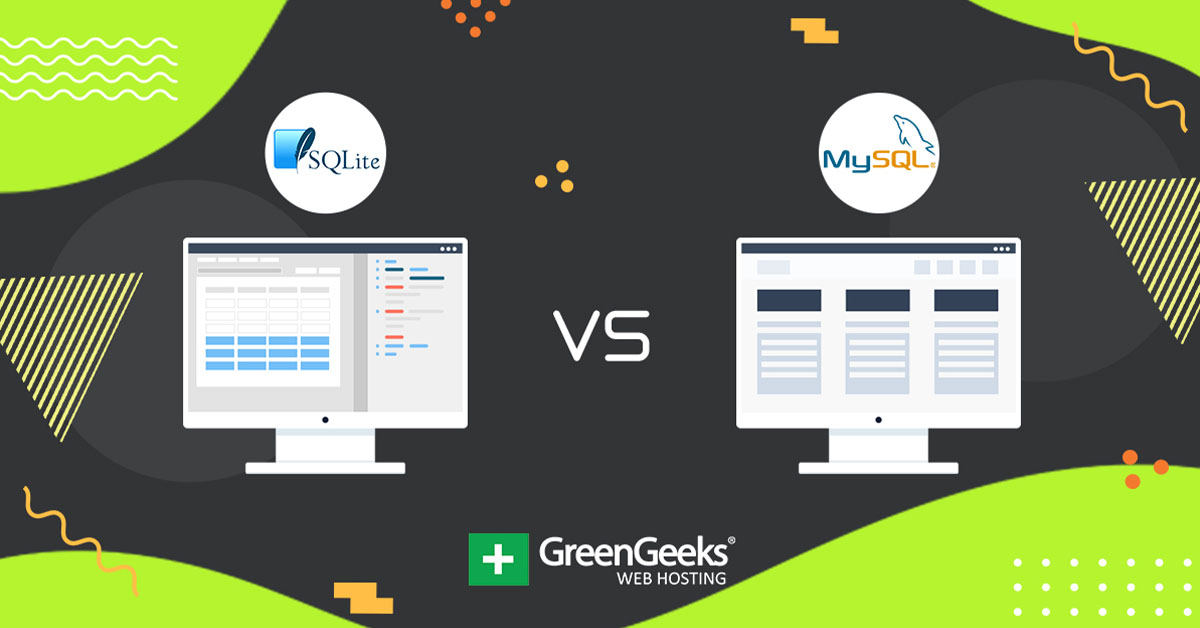
[ad_1]
If you’ve taken any amount of time to look into the backend of your website, you should have heard of the MySQL database. It is by far the most popular choice by web hosting companies, and understanding it can help you make the most of it.
Today, I am here to explain what it is and how it will impact web design.
What Is the MySQL Database?
By definition, MySQL is an open-source SQL relational database management system from Oracle. As a relational database, the data is stored in smaller storage areas called tables. This makes it easier to locate the data you need, but more importantly, it helps organize data.
For example, let’s say you store what your customer recently bought and also their contact information. It’s pretty basic stuff that you would be expected to store. In MySQL, each of these pieces would be stored in a separate table.
Thus, you could examine the table you want to get the information you need. If it wasn’t a relational database, then both pieces of data would be stored in the same location.
First, this makes it very hard to find the data you are looking for.
And secondly, there would be a lot of duplicate information taking up space. This makes relational databases like MySQL very efficient overall.
You can also view multiple pieces of data by using a key. This allows you to take data related to that key from multiple tables. The key is the unique ID assigned to that piece of data.
So for example, let’s say you want to view John Doe’s contact info and shopping history. You would take his unique ID number, and you would pull up all data related to it in another table.
How Do I Interact With the MySQL Database?
Knowing what MySQL is only half the battle. The other half is actually using it.
This database uses a client-server model. What this means is that the user will interact with the client to access the server where the data is stored. It’s quite simple, which is a big reason why MySQL is used widely across the industry.
So how does it work?
In the simplest terms, the user will send a request to the database (server). For example in WordPress, if a visitor clicks on a blog, they are actually sending a request to the server to display a specific post.
And this pretty much applies to everything in WordPress. Whenever you are trying to view any piece of information, a request is made to the database.
The other main way to interact with the database through the client is with scripts.
What Is A MySQL Script?
MySQL Scripts allow the user to send direct commands to the database.
Instead of making a standard request, like clicking on a post to view it, you are instead writing a direct command. This can be used to accomplish a variety of things within the database.
For instance, perhaps you create a script that will replace or insert new information into multiple files at once. This can save you a lot of time as opposed to doing it for each file manually.
However, this raises the question, do I need MySQL scripts?
Not really, everything can be done using other avenues, which beginners may find easier. However, veteran web developers can use scripts to save a lot of time.
The problem is that you need that basic understanding of MySQL scripts to use them. If not, you could easily send the wrong command and do some serious damage to the database.
Thus, while they are a powerful tool to take advantage of, they are not for everyone.
Why Is It Important For Web Design?
It should be relatively clear why MySQL is important when creating a website.
MySQL determines the speed of when things load on your site and how fast you can access that stored data. It has a direct impact on site performance, which makes it an integral part of web design.
Speed is king after all.
If your database is not optimized, it makes it difficult to find the information you are looking for, takes up larger amounts of space due to duplicate data, and ultimately slows down your website.
In many cases, you won’t have to do much to keep the database healthy. However, being able to identify when things go wrong can help you troubleshoot problems in an instant.
This is why many developers will use a tool that allows them to see all of the requests to the database in real-time. That way, the moment a request doesn’t go through, the developer can see what is causing the issue.
So to sum it up, MySQL allows users to diagnose problems within the database and improve load times throughout their websites.
FAQ
What Happens If I Cannot Connect to the Database?
You will encounter the “Error Establishing A Database Connection” error which will not allow you to see the information you are requesting.
This can happen for a variety of reasons, but by far the most common is that you have entered the wrong database credentials. Essentially, the login information is wrong and due to that, you cannot access the database.
If you use a shared web hosting environment, this error could result when there is a spike of traffic that the server cannot handle. Essentially, one of your digital neighbors is hogging the resources, which impacts your experience.
This is why shared hosting is only for websites just starting out. Having your own dedicated server ensures that you always get the resources you pay for.
Other causes could be due to file corruption within the database. Sometimes this can occur naturally, and using a backup to restore the files can solve the issue. In other cases, hackers may have intentionally done this to cover their tracks.
How Does phpMyAdmin Fit In?
phpMyAdmin is a free tool that uses the PHP language (the same as WordPress) to help manage the MySQL database.
By default, MySQL lacks a graphical interface, which most users are familiar with. This is where phpMyAdmin comes it. It provides that interface to help make it easy for web developers to interact with the database.
When I mentioned MySQL scripts earlier, I didn’t mention that those queries are actually made using phpMyAdmin. Essentially, this tool is the interface you will use to manage your database and send manual queries.
What Is A MySQL Fork?
MySQL has had multiple forks over the years. These are essentially copies of MySQL that occurred at specific points in time. These copies were then optimized in a specific manner and developed in a different direction than the main.
The most notable forks include MariaDB and Percona Server.
MariaDB is often referred to as the improved version of MySQL. It has more storage engines and a larger connection pool than MySQL, which results in MariaDB being faster than MySQL.
It’s for users that seek a faster experience.
Percona Server is a full replacement for MySQL. It put a lot of focus on improving the InnoDB and was successful in doing so. You can see a lot more of what’s going on in the workflow, which helps you catch mistakes.
How Can I See Each Database Request Made?
If your trying to troubleshoot problems, seeing the actual request list for the database is helpful. And in WordPress, this is easy to do.
Like most things in WordPress, all you need to do is install the right plugin for the job. In this case, that plugin is Query Monitor. Query Monitor is a free debugging tool for WordPress that allows you to see all database requests.
Essentially, it tracks every request made when a page is loaded and how long it takes for that request to occur. As a result, you can identify exactly what is slowing down your page and by extension, fix it.
It’s a powerful tool that is active on over 100,000 WordPress websites, so be sure to give it a try.
How Can I Optimize the MySQL Database?
You might think that optimizing a database is very complicated, but you would be mistaken. In reality, there is a built-in optimize command.
All you need to do is enter and execute the following SQL query:
OPTIMIZE TABLE 'wp_posts'Yet, this isn’t the only built-in method. There is actually an optimized option you can use by selecting all items in the database. This is more beginner-friendly as it doesn’t involve any lines of code, but there’s still an even easier way: WordPress plugins.
That’s right, you can actually optimize the database from your website without any coding. In this case, you have a few options, but one I can recommend is WP-Optimize.
As the name implies, WP-Optimize is an optimization plugin for WordPress. It can be used to optimize the database in just a few clicks, but it goes beyond just the database. It will also optimize things like images, allow you to cache pages to improve speeds, and more
If your looking to optimize WordPress, this plugin is one of the best ways to do it.
How Can I Keep My Database Small?
Another way to help optimize your database is to keep it small, but how can you do that?
Well, it’s actually pretty simple. You need to get rid of what you don’t need.
Not only can this help shrink your database, but it can help shrink web hosting costs. After all, you are paying for that space.
So, where to start?
The first thing I would recommend is to limit the WordPress revisions feature. By default, WordPress will save every change you make to a post or page. While this is a great recovery tool, there’s no reason to hold onto revisions from several years ago.
Instead, limit the revisions to 3 or a more reasonable number. You also have the option to disable the feature entirely.
If you have a ton of comments that have built up but never checked, that is another excellent spot to clean up. Delete the spam comments and approve the rest. Larger websites can generate thousands of spam comments in a day. It adds up fast.
Delete any plugins or themes that are currently not in use. These can take up a surprising amount of space. Sometimes you may be able to remove plugins because the feature is available in another you already use.
Not only does this help the database, but it is just a good practice in general.
There’s No Avoiding MySQL
MySQL is the most widely used database engine in the world and just about every web hosting company uses it. There are a few exceptions, but even in those cases, they’re just using a MySQL fork like MariaDB.
While you can certainly limit your direct usage with the database, it is there and it will have a huge impact on your website. Taking the time to understand and optimize the database for your website is a surefire way to boost site performance.
Thus, every website owner should work towards understanding the basics of the MySQL database.
What steps have you taken to optimize the MySQL database? Do you use any plugins to help you manage the database in WordPress?
[ad_2]
Source link






